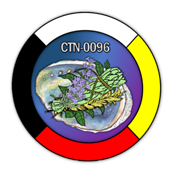CTN-0096: Culturally Centered MAT for OUD Implementation Facilitation for Primary Care and Addiction Treatment Programs Serving American Indian/Alaska Natives

Kamilla Venner, PhD
Lead Investigator
University of New Mexico
Department of Psychiatry
kamilla@unm.edu
Aimee Campbell, PhD, MSW
Lead Investigator
Columbia University Irving Medical Center
New York State Psychiatric Institute
Department of Psychiatry, Division on Substance Use Disorders
anc2002@cumc.columbia.edu
The U.S. is in the midst of a devastating opioid epidemic. Since 1999, the number of overdose (OD) deaths involving opioids quadrupled (CDC, 2016). These trends are magnified among American Indians/Alaska Natives (AI/ANs) compared to other racial/ethnic groups. AI/ANs are second only to Whites in the rate of OD mortality (8/100,000 versus 12/100,000 deaths, respectively) (CDC, 2016). Medications for OUD (i.e., methadone, buprenorphine, and naltrexone) are considered the most effective treatment, reducing mortality and increasing abstinence and retention (SAMHSA, 2018). However, numerous barriers limit the uptake of medications for OUD in Tribal communities and within urban treatment settings serving AI/AN individuals. This is a two-phase formative research study to develop and test an implementation intervention for programs to provide medications to treat opioid use disorder (OUD) specifically with American Indian / Alaska Native (AI/AN) consumers. The objective of Phase I (12 months) is to develop a culturally centered implementation intervention to integrate medications for opioid use disorder (MOUD) into healthcare/addiction specialty settings. The objective of Phase II (24 months) is to conduct a preliminary test of the implementation intervention in four (4) sites serving AI/AN communities. Community Based Participatory Research (CBPR) methods will be used throughout both phases. This study will help with decreasing stigma and increase the utilization of MOUD in health care settings that serve AI/AN populations.
Funded by the NIH HEAL Initiative®.
Related Studies
Related Resources
Node Involvement
Lead Node(s):
All Participating Nodes: